Qualifying Entry for the Architectural Design Contest

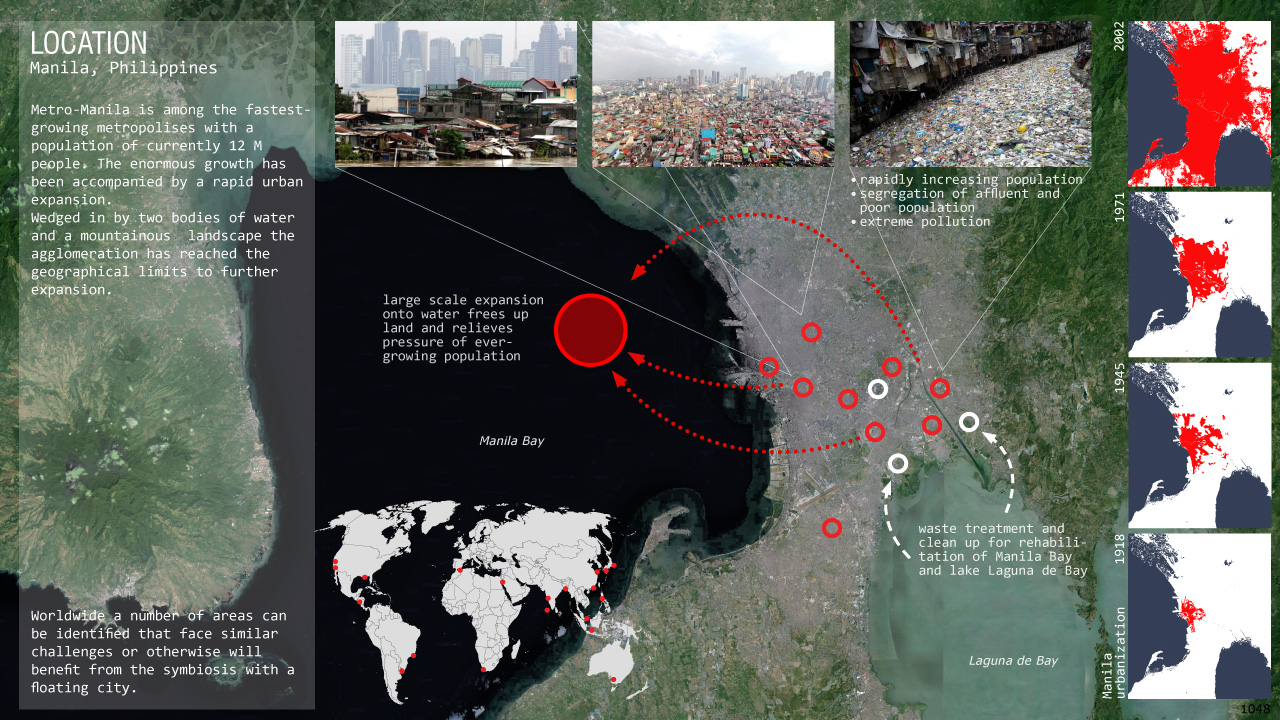
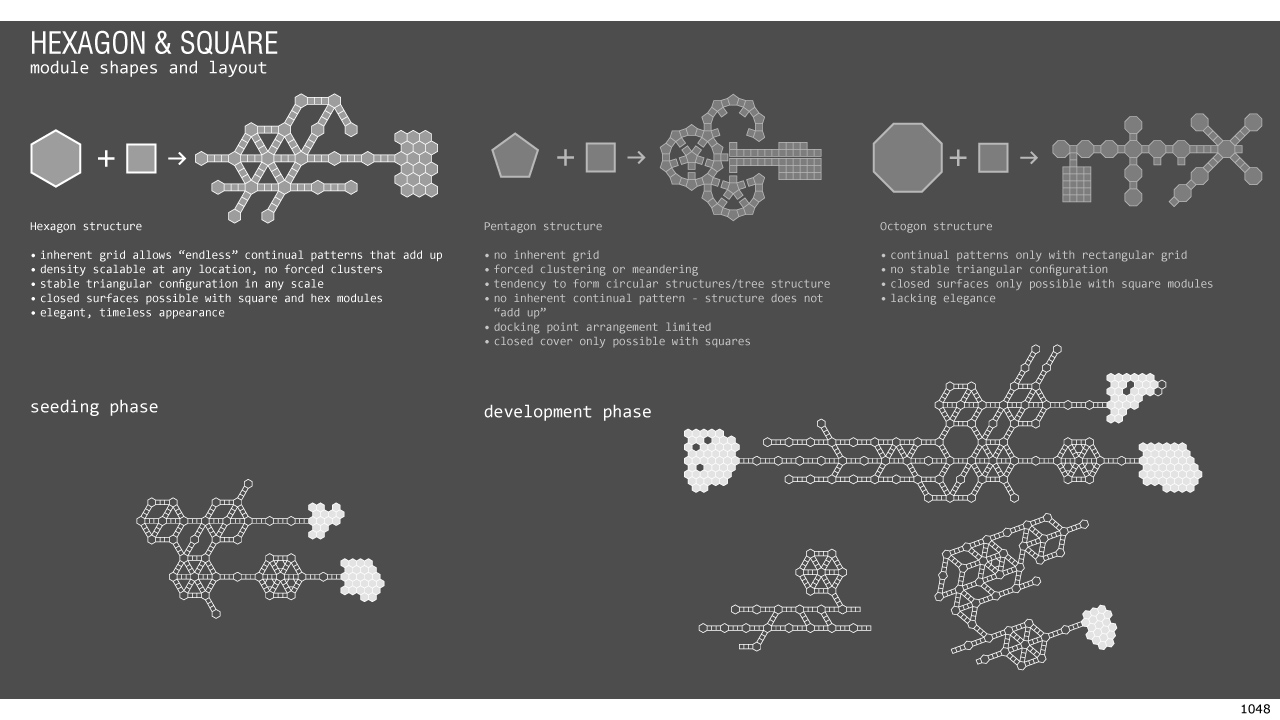
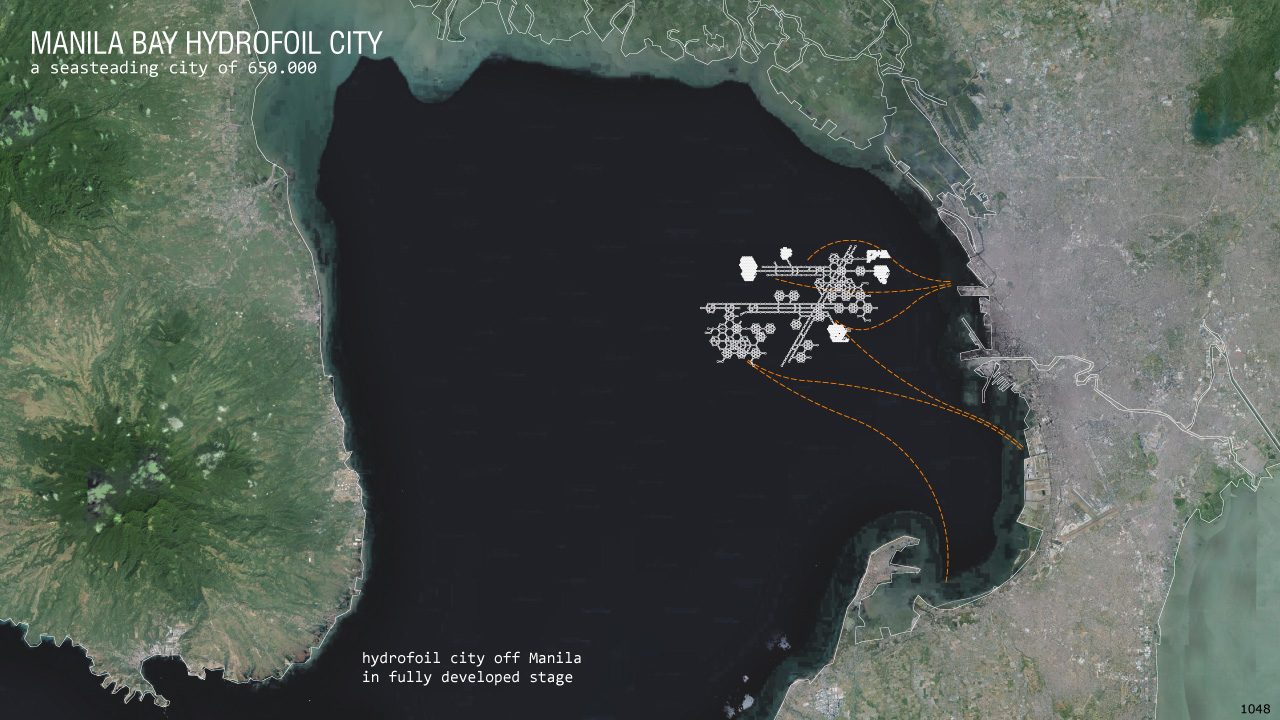
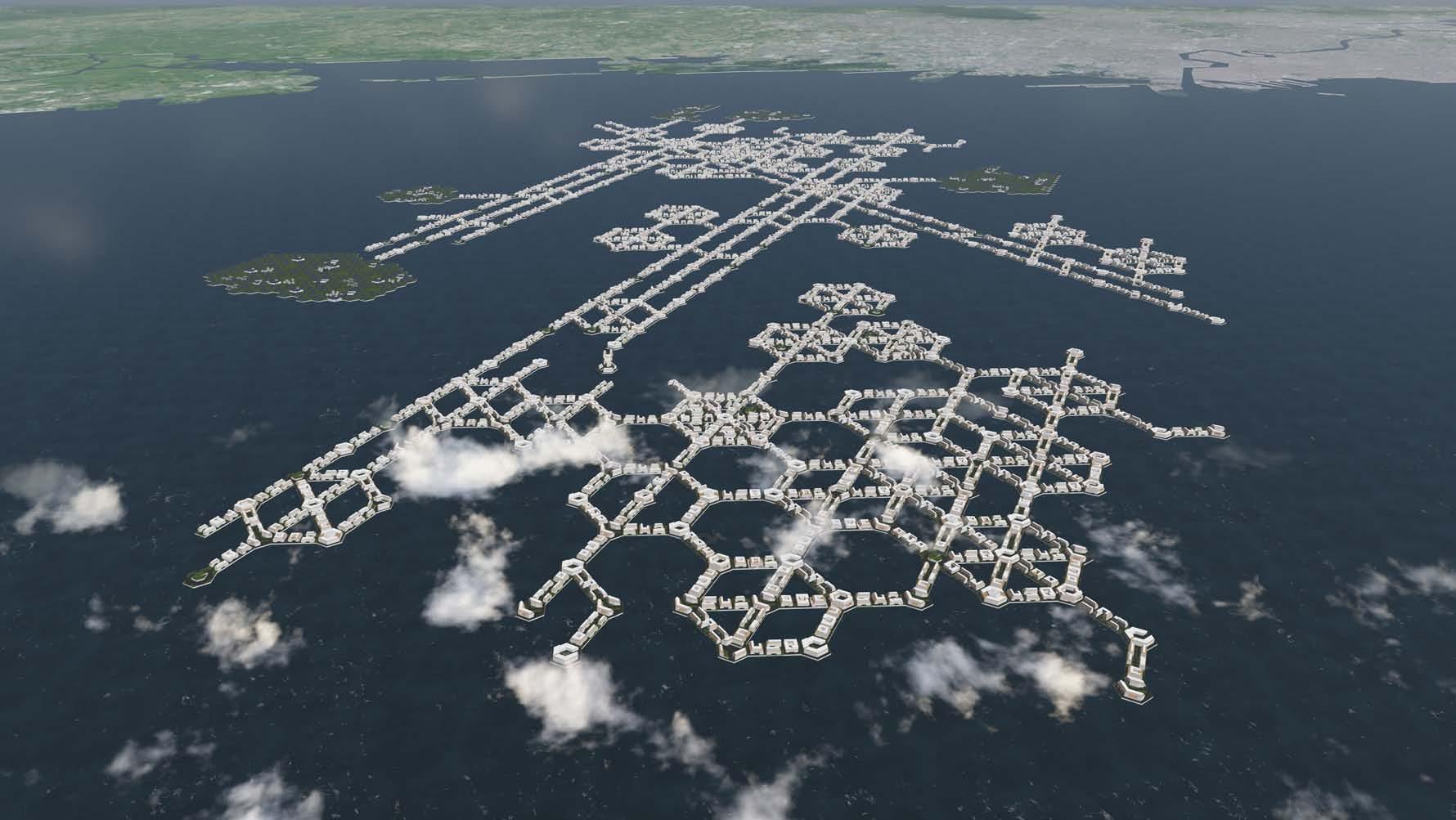
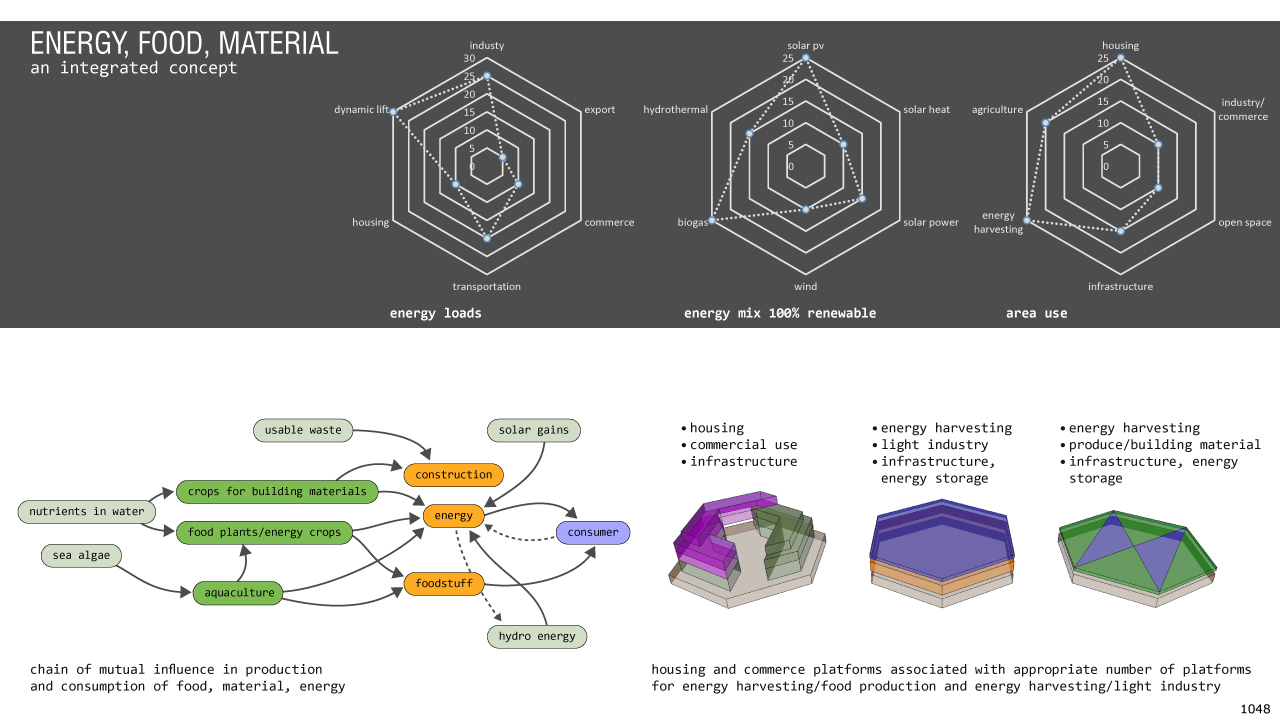
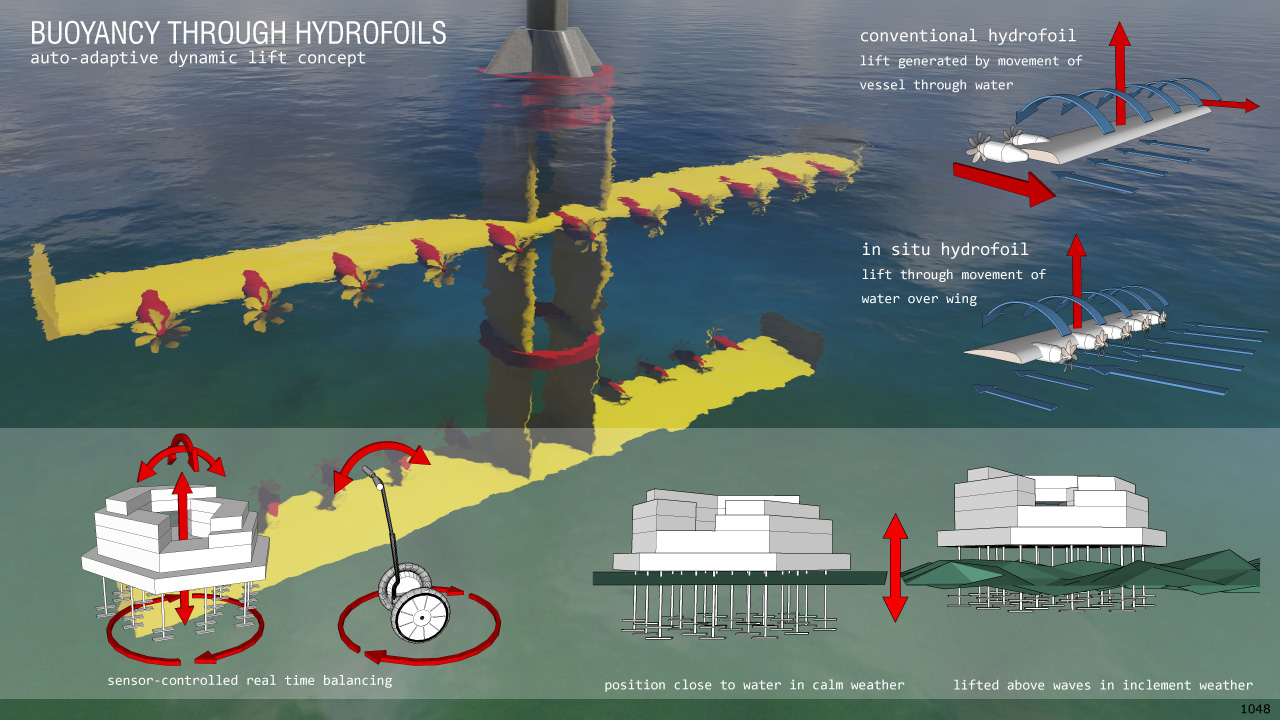
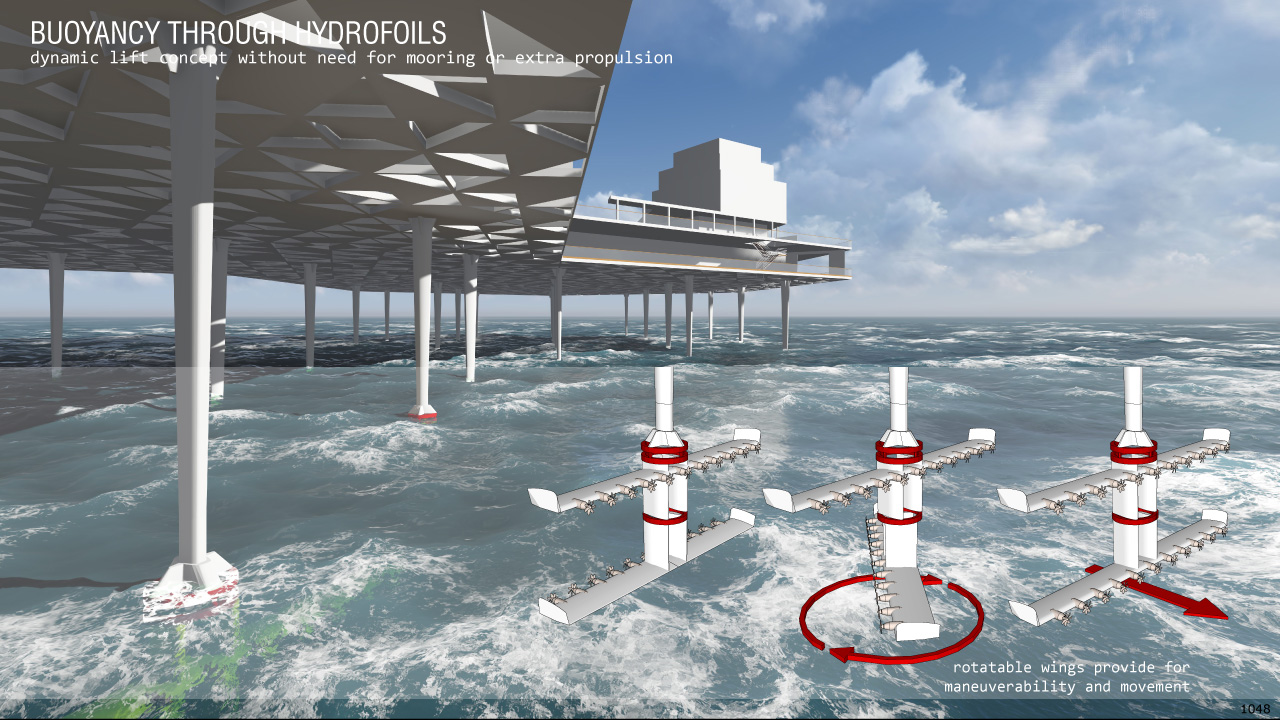
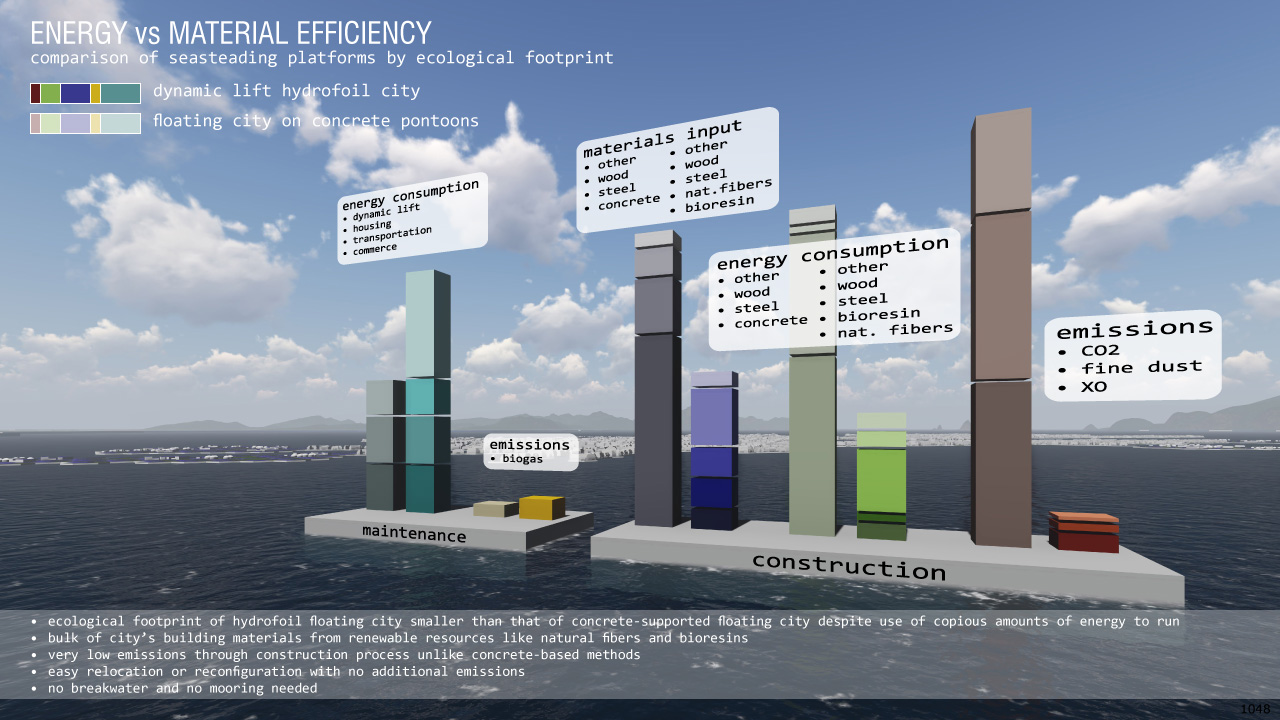
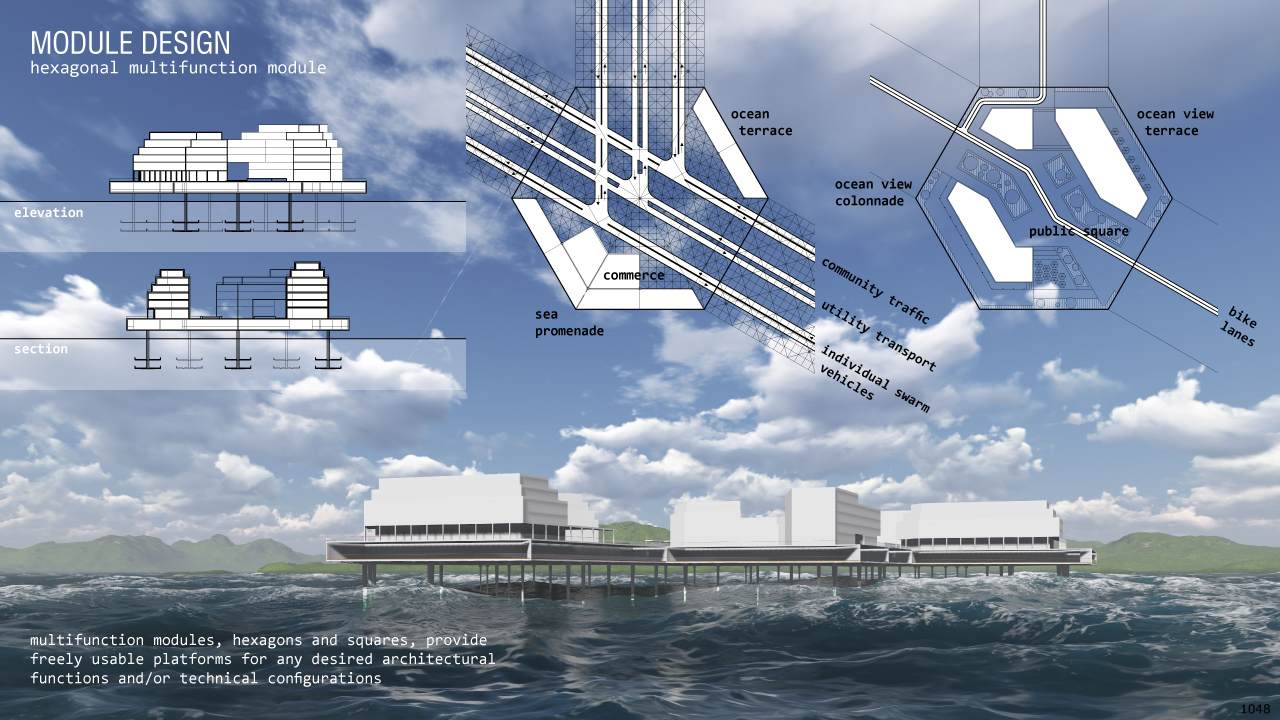
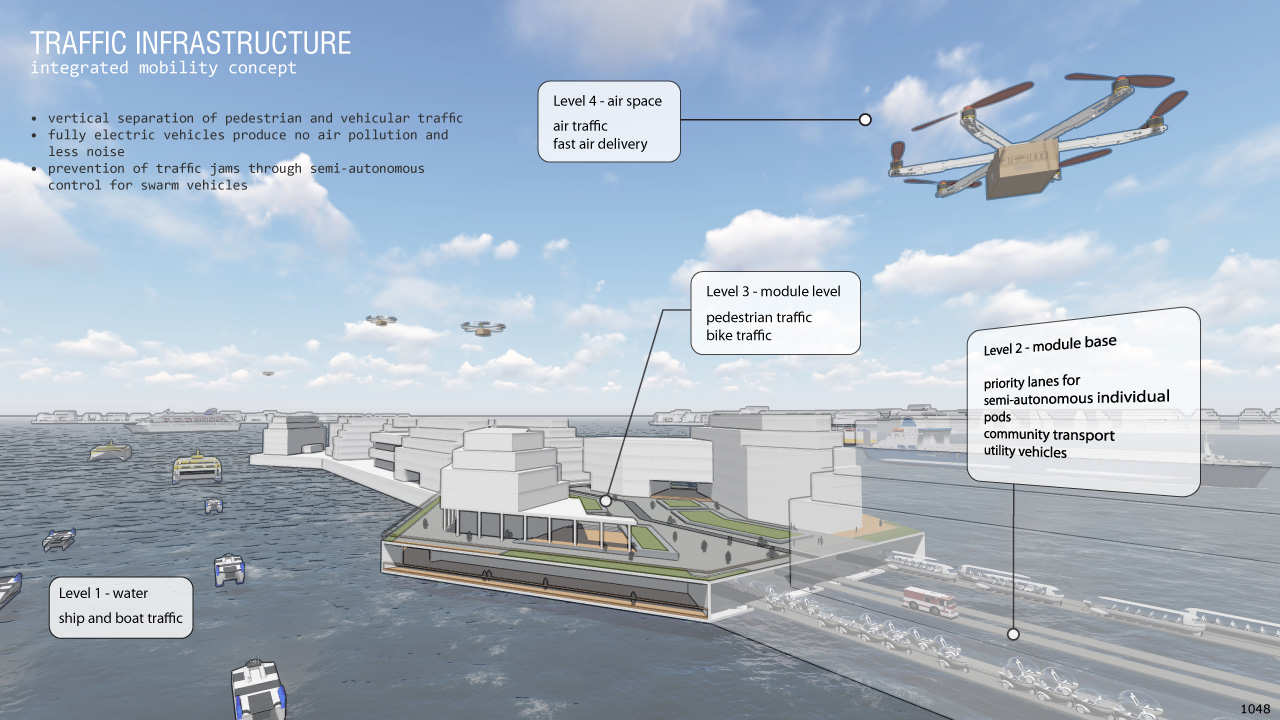
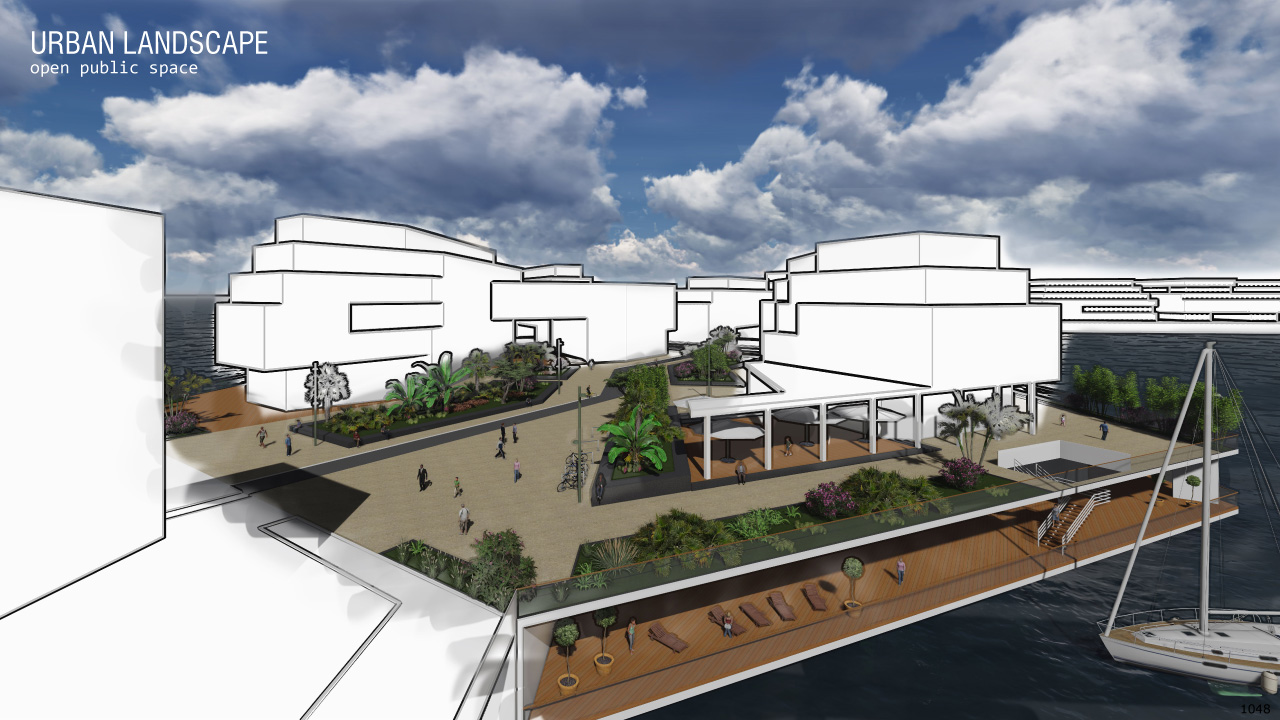
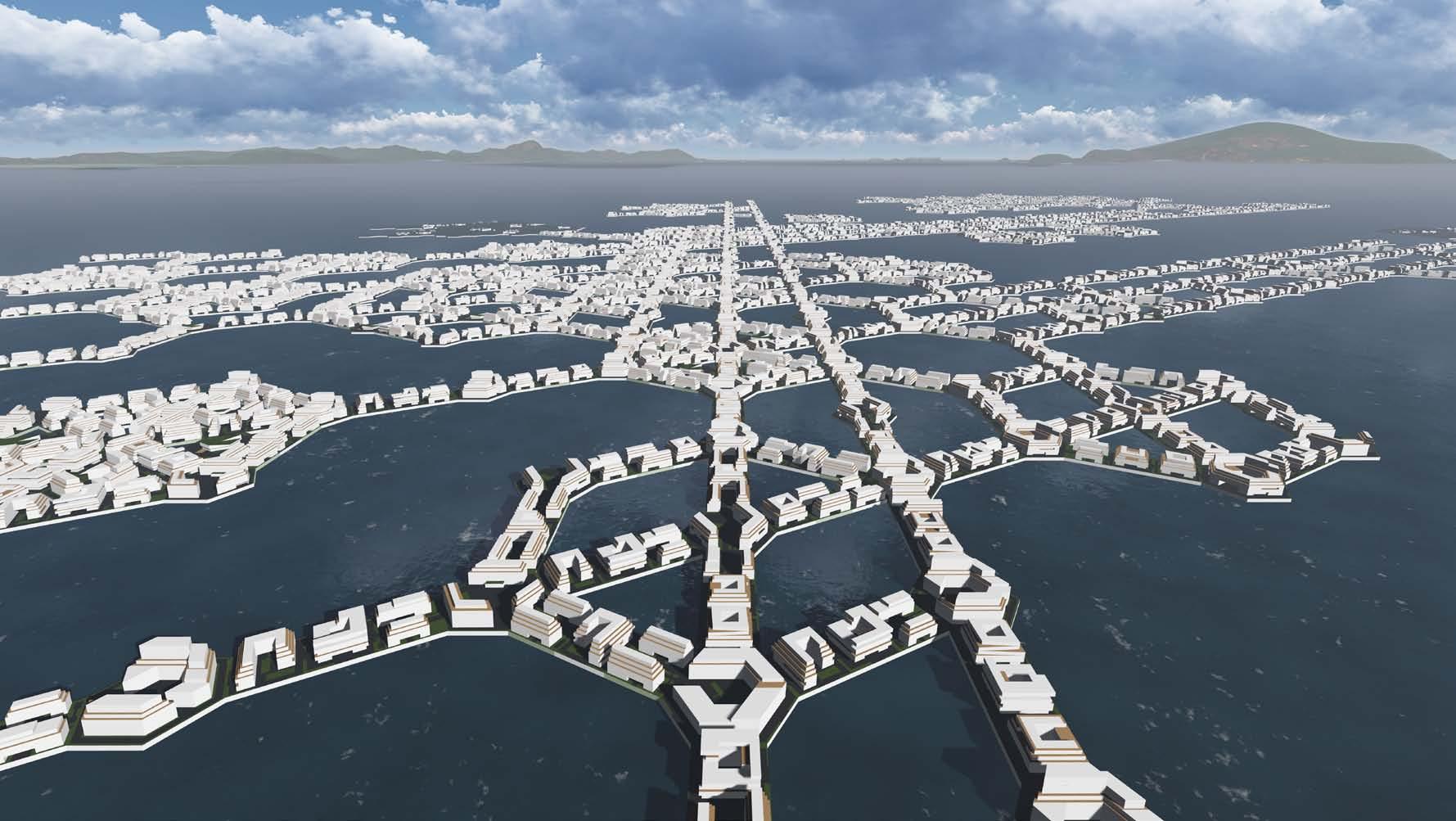
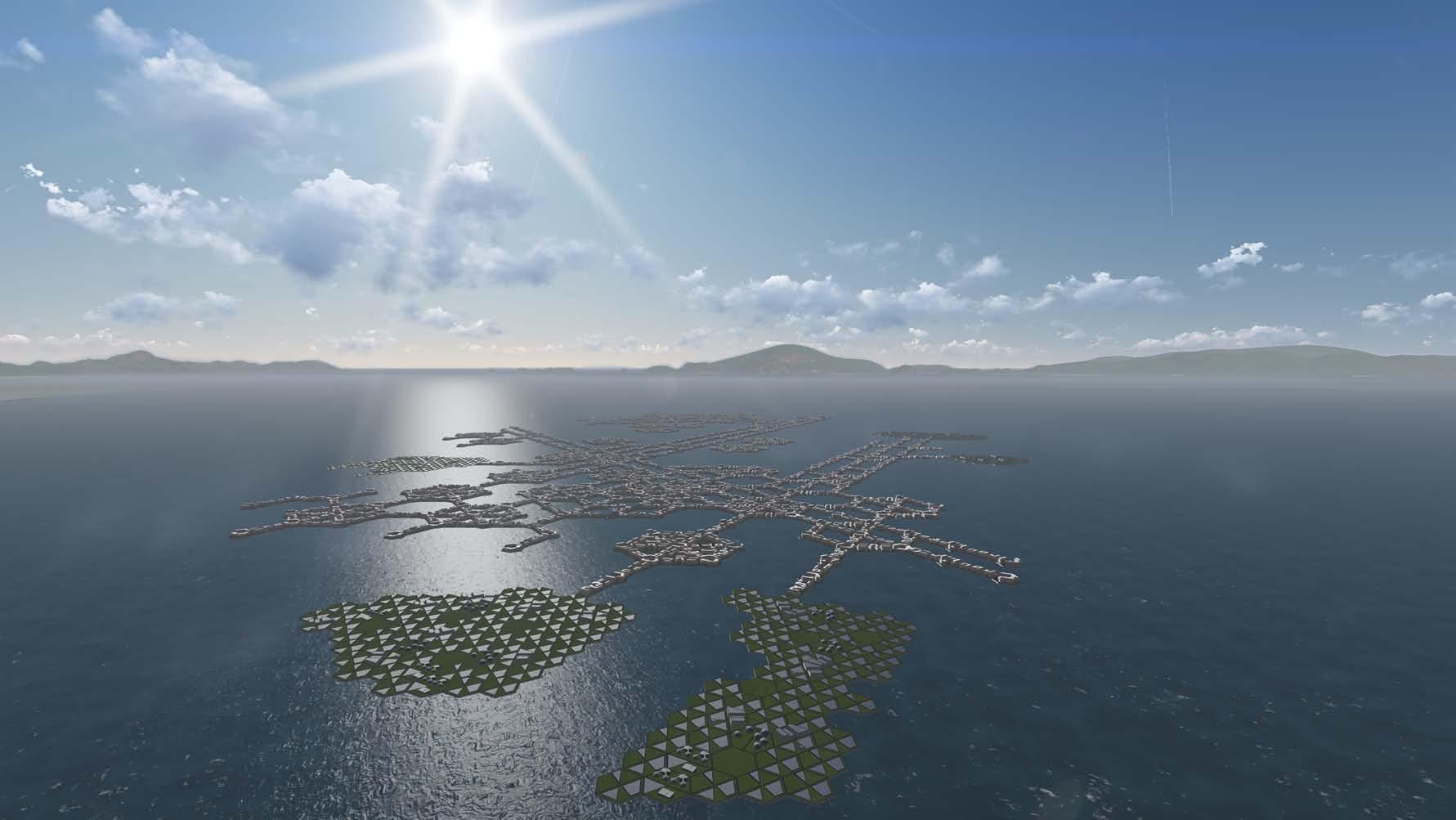
Submitted by Daniel Schwabe (Synarchitects GmbH)
Hydrofoil City is a concept for floating cities in the proximity to existing cities worldwide founded on the idea to create self-sustained habitats with a positive impact on the socio- economic and environmental settings of their surroundings. Based on an integrated concept for the production of materials, food, and energy it provides new habitable areas in a large scale and as such has the potential to relieve the stresses of population pressure, social segregation, calamitous forces of nature, climate change and environmental pollution in the places most affected by these.It is generally accepted that in order to minimize the effects of climate change harmful emissions of pollutants have to be reduced to a minimum. The continuing growth of the world’s population on the other hand will require building new and expanding existing cities all over the planet resulting in massive emissions, ongoing depletion of material resources, and seizure of valuable lands. Concrete and steel are today’s choice of building material for mass construction. But the emissions associated with their use, from extraction of raw materials to production and construction, are prohibitively high. In order to curb predatory exploitation of resources and further driving climate change it is crucial to limit the overall use of material needed for construction. Hydrofoil City rethinks the fundamental approach to building new cities. Starting from the premise that the sheer raw material for future cities accommodating people numbering in the hundreds of millions will simply not be available Hydrofoil City does away with material substance. Instead, it eliminates the necessity of large water-displacing built volumes while accepting a significantly increased use of energy. Rather than floating on large pontoons of concrete Hydrofoil City obtains buoyancy through a concept of active dynamic lift, much like boats use foils to lift them out off the water for reduced drag. Hydrofoil City uses in situ hydrofoils that build on the same principle except that here numerous electric propellers move the water over wings which remain in a fixed position. Held up through dynamic buoyancy the seastead functions without pontoons and thus eliminates the use of construction material at a tremendous scale. With this concept more advantages come to play: The city has great maneuverability and agility, changes of location are easy to achieve. The whole city has an adjustable draught as the whole structure can be lifted or lowered depending on how high waves are getting. This way, similar to an oil rig, it is particularly unsusceptible to swell. At the same time it provides close proximity to the water surface as is desired in fair weather. Hydrofoil City thus combines the advantages of the floating pontoon with the seaworthiness of an elevated platform on stilts, two typically contradictory concepts. There is no need for extra breakwaters with all the associated expense and material cost of construction, harmful emissions, obstruction of view, and impaired maneuverability. The platforms need no mooring. The dynamic support system compensates all lateral and vertical movements. The large number of hydrofoils and activating motors provide for large margins for power and loadbearing capacity while ensuring a high degree of redundancy and safety.During the phase of progressive buildup of modules into a larger structure the ability to easily maneuver and reconfigure is a perfect tool to optimize the growing urban fabric. Also after consolidation occasionally changing the structure’s location helps to minimize impact on the seabed environment if necessary, e.g. through shading. Natural conditions like severe weather systems or volcano eruptions or manmade disasters might necessitate timely relocation. The megastructure of Hydrofoil City consists of modules in hexagonal and square shapes with edges 60 m (197 ft) in length. This geometry produces an inherent 60 degree grid that allows “endless” continual patterns with connections at any desired location and a stable triangular configuration in any scale. Density can be increased or decreased in any given area as desired. Uninterrupted surfaces can be realized with both square and hexagonal modules. Patterns based on other shapes like pentagon or octagon usually produce more limited geometries with less desirable results. Moreover, the hexagon shape boasts an elegant, timeless appearance. Each module has a structural base supported on a number of stilts each with a set of hydrofoils at the water end which operate in two levels and can be configured for buoyancy only or additional lateral propulsion. The structural platform base is of a lightweight construction and contains the main infrastructure and traffic systems. All media and infrastructure is easily accessible in all places and therefore extremely adaptable. Thus, the platforms serve as base for different parts of the urban fabric like housing, commercial activities, light industry, agriculture and energy harvesting. All modules, hexagons and squares, are multifunctional and can support any architecture and technical function as necessary or desired.All energy consumed by the city functions including powering the hydrofoil dynamic lift is generated by the floating city itself. Energy production is generally sustainable without depletion of natural resources and emission of harmful pollutants. The main materials for construction are lightweight eco- sandwich materials made from natural fibers and a bioresin matrix. Natural fiber-reinforced composites (NFC) possess great mechanical properties whilst generating a small ecological footprint. The module base level is of steel/NFC hybrid construction, whereas stilts and wings are made mostly of NFC. The raw materials for the NFC are produced within the city on dedicated agriculture and energy harvesting modules. The structures atop the platforms are erected in timber construction without the usage of concrete. Solar shading, thermal insulation and component activation through phase change materials (PCM) ensures passive climate management for improved comfort. Building materials come largely from renewable resources. Many building components use upcycled waste materials whenever feasible as they are likely available in the host city. Lightweight construction using sustainable sources for raw materials in combination with renewable energy is the key for a future development of mankind that preserves the habitats of planet earth. Availability of abundant clean energy from renewable sources merely calls for appropriate technologies to harvest and generate. Such technologies are in place today already and continue to develop and improve rapidly.
All design contest images on this page are under the Creative Commons Attribution License. It means that you are allowed to redistribute and modify images but that you must attribute the original designer when doing so.